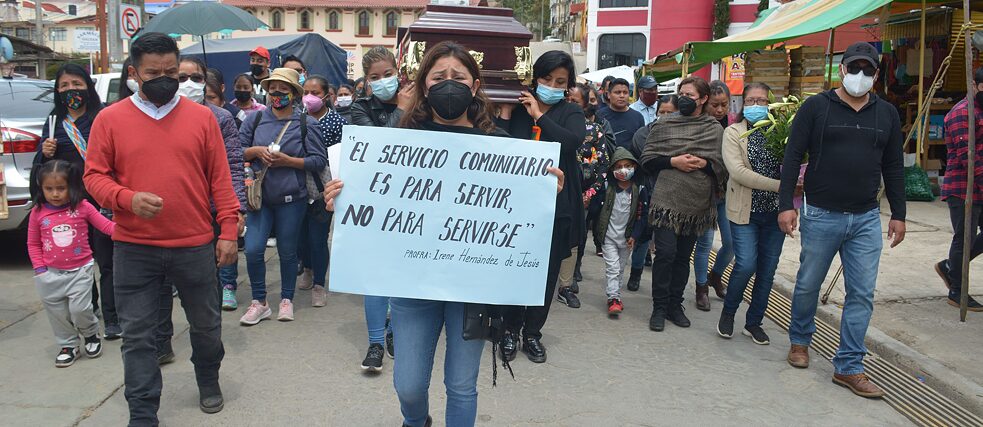Interview with Ana Karenina and Lizbeth Hernández
She raised her voice against machismo

How did you find out about your story’s protagonist?
We were interested in the lack of water in Ayutla, an Indigenous region in the north sierra of Oaxca. We contacted Yásnaya, a writer, linguist, and a woman vocal about this issue because we wanted to tell her story. But she told us about Irene and how she was the matriarch for the women in the community. So that’s how we got to know her.
Why does the world need to learn more about your story’s protagonist?
Because Irene was truly amazing. She was a teacher, the first female president in Ayutla, a counselor for the people, and she was focused on helping women and teach them how to lead. She raised her voice against machismo in her community and was active in the fight for the reconnection of water.
What was the most surprising discovery you made during your research?
Getting to visit them, and seeing that their culture, customs and problems were much more complex than we had imagined. Putting that into a comic has been challenging.
What gives you most pleasure while working on the project?
Talking and getting to know all the people around Irene. We interviewed her by phone before she passed away, and we’re happy that we can offer a posthumous tribute to her.
What did you learn from the workshops, mentorships, and other participants?
A lot. We genuinely appreciate having amazing mentors to help us out with graphic, content and storyline solutions. We’ve been learning to tell better stories focused on Indigenous culture. Also, it has been really valuable to know how other participants are working on their own stories, enabling us to discover new visions and ideas for ours.
What aspect have you found most challenging during the process so far?
When we received a call with the news that Irene passed away just three days before we were going to visit her. We knew her personally, and her death hit us hard. We had to change the course of the research and the story, but we’re glad we were able to quickly portray her importance to the history of Ayutla.
How are you trying to give back to the community?
People, and mostly women, are pleased with this work because they admired and loved Irene. She was part of a women’s collective, and we’re working with them by translating the work to Mixe (their mother tongue), developing a presentation (maybe a homage event for Irene), and trying to get more people to actively support the movement #AguaParaAyutlaYa (#WaterForAyutlaNow).
What should ideally happen after the project’s publication?
We hope that people in Ayutla, especially women, are pleased with the publication and approve of our rendition of Irene’s story and the representation of their culture. We hope that her story is able to inspire women everywhere.
What are your plans for the future?
Lizbeth: For me, to continue documenting women’s movements through Mexico and Latin America.
Ana Karenina: I hope to make more comics in long (and longer) formats about women’s issues.
Both: And maybe we will be able to work together again in the future.